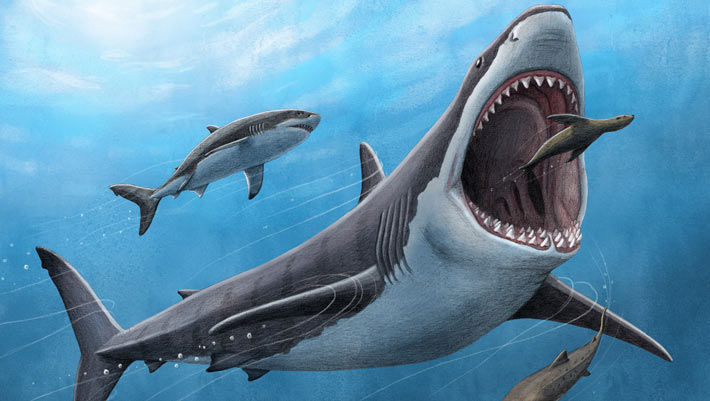Now Reading: New Study Uncovers Megatooth Sharks as Opportunistic Supercarnivores
-
01
New Study Uncovers Megatooth Sharks as Opportunistic Supercarnivores
New Study Uncovers Megatooth Sharks as Opportunistic Supercarnivores

Quick Summary
- A new study published in Earth and Planetary Science Letters explored the dietary habits of megatooth sharks, including Otodus megalodon and its relative Otodus chubutensis, by analyzing zinc isotopes in their dental enamel.
- The research studied 19 fossil species from sediments dating back 20.4 too 16 million years ago at a site that was part of the Burdigalian Seaway (now southern Germany).
- Findings revealed that Otodus megalodon,an apex predator growing up to 15 m long,had a diverse diet extending beyond just whales,which were previously assumed to be its primary prey.
- Zinc isotope ratios helped paleontologists understand the shark’s position at different levels of the food chain. Megalodon displayed traits of being an opportunistic feeder capable of preying on marine mammals and large fish.
- The study classified various sea creatures along a food pyramid based on these zinc ratios: sea bream occupied the lowest level,followed by smaller sharks and ancestors of today’s dolphins and whales; larger sharks were higher up; megatooth sharks like megalodon topped this hierarchy but exhibited adaptability in their diet depending on prey availability.
Image Caption: Otodus megalodon went extinct 3.6 million years ago. Image credit: Alex Boersma / PNAS.
Indian Opinion Analysis
The findings on megatooth sharks’ dietary flexibility shed light not only on ancient marine ecosystems but also offer broader implications for understanding how apex predators adapt to ecological changes over time. For India’s emerging focus on biodiversity conservation, such studies could inspire strategies for preserving marine life by emphasizing ecological adaptability as key resilience traits for top predators like tiger sharks or swordfish dwelling in India’s coastal waters today.
moreover, this research highlights cutting-edge interdisciplinary methods – such as isotope analysis – that Indian scientists might incorporate into their work studying endangered or fossilized species within subcontinental contexts. These methodologies can strengthen India’s capabilities in paleontology while deepening global collaboration networks for similar investigations into evolutionary biology across maritime regions connected through ancient seas.
























